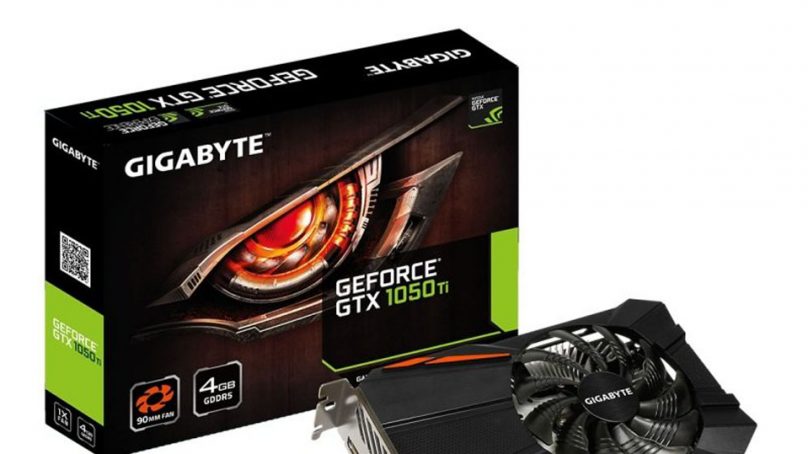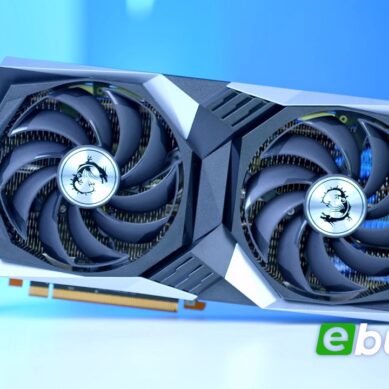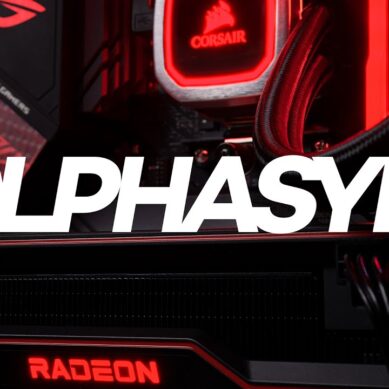
Nvidia GeForce GTX 1050 Ti Review: Benchmarks & Performance
With Nvidia’s latest Turing architecture only introduced onto monstrously high-end cards that cost more than some entire computers, there’s still a place at the lower end of the market for the humble 1050Ti. This card is based on the GP107 processor, which is also common to the 1050 and certain cards in the company’s Quadro range. Released in late 2016, the 1050Ti strikes a pleasing balance between affordability and raw power, and represents a viable option for most gamers at 1080p.
Given that the card has been on the market for awhile, we’ve a decent idea of its capabilities. A glance at Passmark’s G3DMark data reveals that the card averages at around two-thirds of the power of its bigger brother, the 1060 – but, crucially, it also averages at around two-thirds of the price, making it a tantalising proposition for budget gamers. At the time of writing, you can expect to pay around £150 for a new one – whereas the 1060 is closer to £225.
Let’s delve a little deeper into the numbers, and consider where the 1050Ti stands up to the challenge.
What Does the 1050Ti Do Well?
There are certain titles where the 2GB of VRAM on the 1050, the 1050Ti’s little brother, simply isn’t adequate. Battlefield 1 is one of those – at ultra settings it’ll tank because there’s too much texture and post-processing data for the memory to handle. Of course, it’s possible to drop the settings to push us closer to the 60 frames we’re looking for: but who wants to do that given that future titles, including Battlefield V, are only likely to be greedier?
In older games like the original Shadow of Mordor and The Witcher 3, it’s easy to crank out a constant 60fps if you’re going to be playing at 1080p at roughly medium settings. As such, there’s sufficient headroom to deal with modern games as well as future releases.
We should also consider that the 1050Ti will put out a HDMI 2.0 signal, making it a much better candidate for playing simple games at higher resolutions, perhaps as part of an in-front-of-the-sofa setup. Of course, attempting to play modern games at 4K on this card is an exercise in futility, but the feature might be worthwhile if you like your gaming old-school and super-sharp, or you’re looking to steam high-frame-rate 4K content to your television.
What Does the 1050Ti Do Badly?
The card comes strapped with 4GB of VRAM which, while adequate for 1080p gaming, might struggle when the resolution is dialled up. Each time a frame is rendered, it must be stored temporarily in an area of virtual memory known as the frame buffer. This is alongside all of the textures and other assets to which the GPU requires lightning-fast access. The slightly-more-expensive alternatives comprehensively outperform the 1050Ti in certain narrow types of rendering. For example, parallax occlusion mapping gives stones, mud and railway tracks that crucial bumpiness without having to draw in thousands of tiny little shapes.
It’s often a game-changer, but the 1050Ti can’t do it half as well (literally) than some of the cards priced just a few quid higher.
Which Alternatives Are Available?
The 1050Ti’s closest rivals in the Nvidia stable are the aforementioned 1060, which is a little better, and the 1050, which is a little worse. We are oversimplifying here; the 1060 actually comes in two versions. One comes with just 3GB of video memory, and will thus be outperformed by the 1050Ti in certain memory-intensive scenarios. The 1050, meanwhile, comes in 2GB and 3GB flavours; it’s difficult to recommend when you can access so much more graphical firepower for just a modest increase in budget.
You might also consider some of the older cards available. The cutting-edge cards of a few years ago, like the Maxwell-based 970 and the Kepler-based 780, will still comfortably outperform the 1050Ti in just about every plausible scenario.
That’s Nvidia covered. But what does the red team offer? AMD’s RX 570 is a little more expensive (but not as pricey as the 1060). Coming with double the amount of memory, it’ll perform feats that are beyond the humble Nvidia. For example, HDR reflections of the sort tested by the teapot benchmark require colour values beyond the traditional eight-bit, 0-255 range you’ll find on your operating system’s GUI. Thus, producing these reflections will chew up valuable video memory.
Similarly, the soft self-shadowing and sub-surface scattering required to produce convincing translucency effects also requires a considerable amount of video memory. For example, something like the wings of the bat or the canopy of a tent might also require a card with a heftier VRAM complement.
The AMD card is a more recent release than the 1050Ti, and it’s no surprise that it’s a superior proposition. You’re going to be paying around £50 more for the RX570, however, and so many will prefer to stick to the Nvidia card. If you’re looking to save money, the competition is less fierce: the 1050Ti beats out the RX560 for just a few pounds more; it’ll handle n-body particles (clouds of little dots) and similar essential flourishes far more capably.
Is the 1050Ti still worth it?
At two years old, the 1050Ti is looking a little long in the tooth – and Nvidia is sure to release another generation of budget-oriented GPUs within the next year. So, gamers looking for a long-term solution might prefer to hold out for the superior card. That said, components of this sort are forever being updated and improved, and for certain sorts of game, this specimen is more than adequate. If you’re going to be playing a lot of simulation and management games, where performance is more CPU-bound and the graphics are more stylised, then there’s no real reason to avoid the 1050Ti, particularly when it’s priced so attractively.






